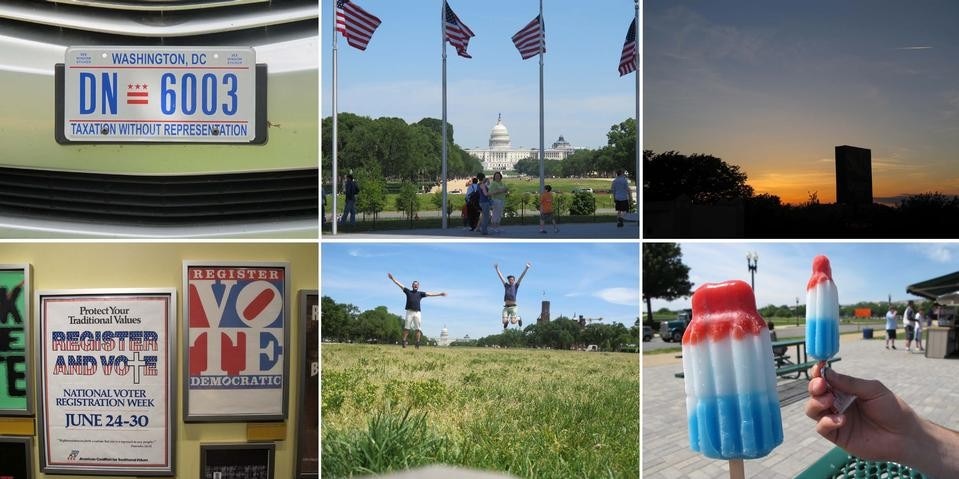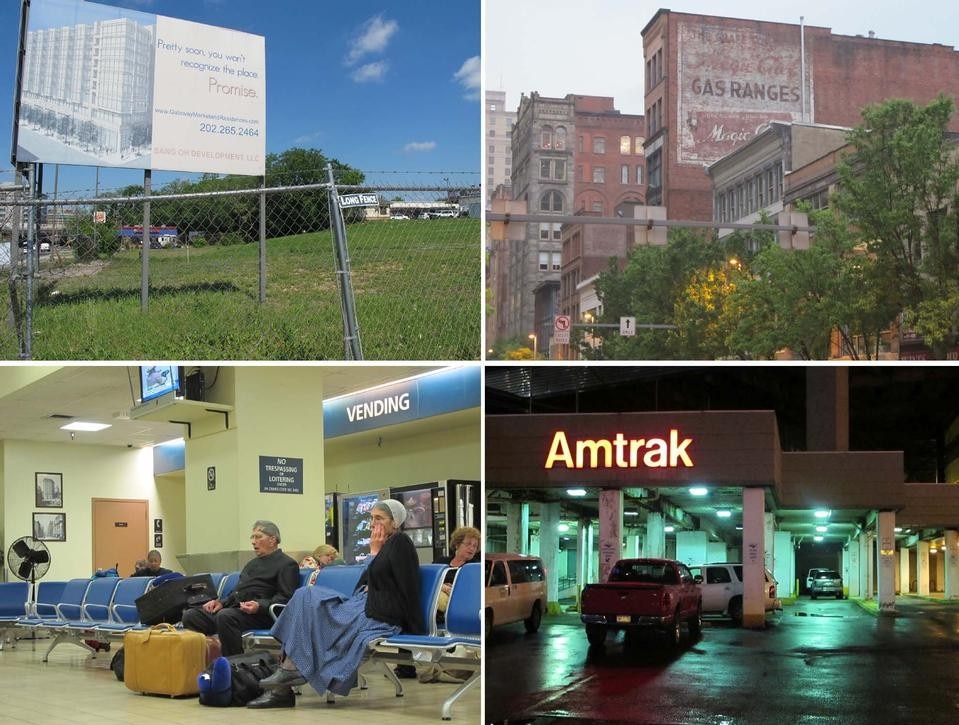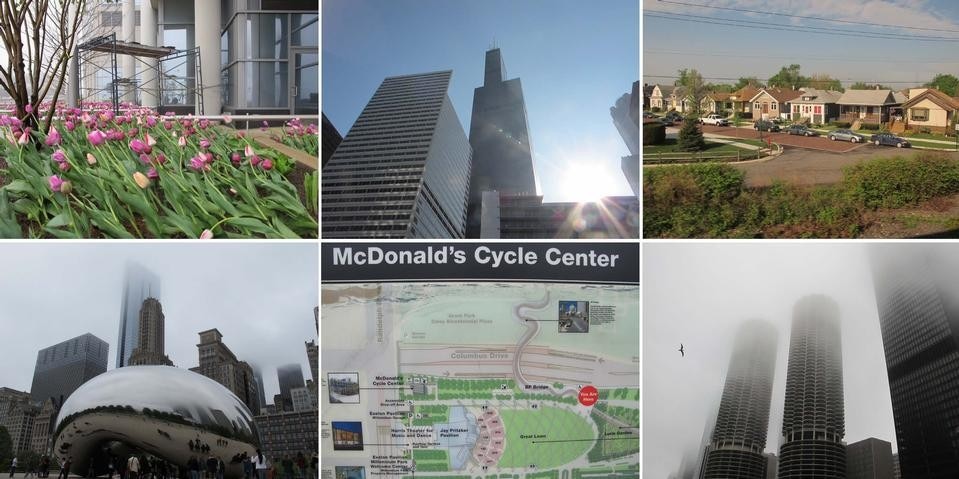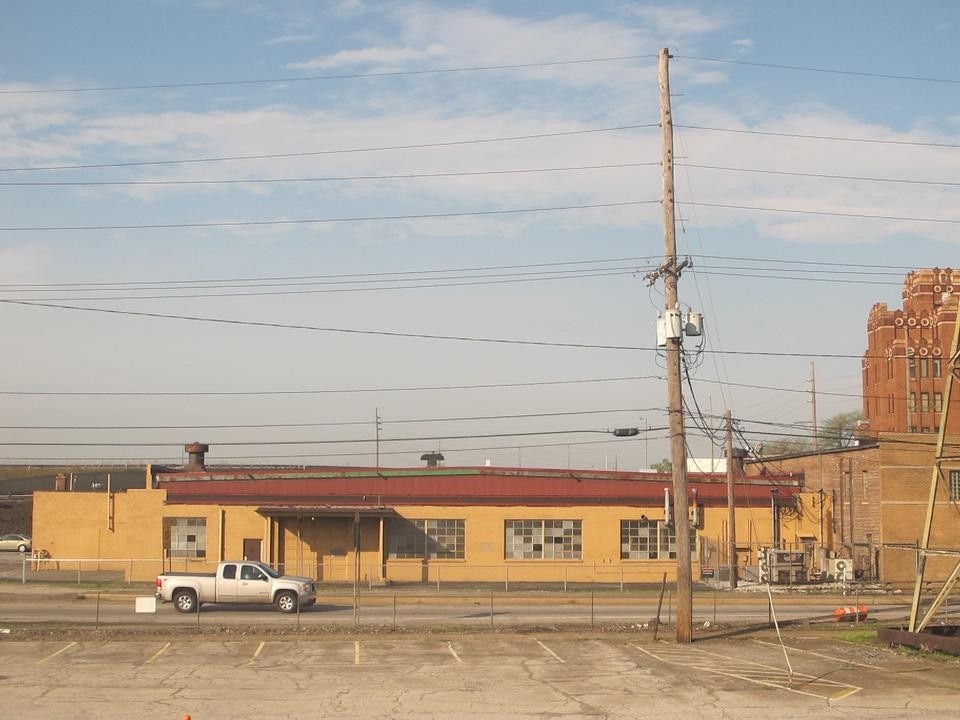It's a sunny morning as we board the train from Baltimore. Pulling out of Penn Station, it's time to leave Maryland behind, pink flamingos and all, and move on towards the nation's capital. We slowly trundle through mile upon mile of mid-Atlantic suburbia, blurring the boundary of Washington, DC. Past one airport, many strip malls, and countless freeways, the creaking train eventually arrives into Union Station.
I was excited. Washington never really struck me as my kind of city, never particularly on my list of places to go. But it seemed impossible to not be impressed and wooed by the impending grandeur of the place. The very idea of DC, to my mind at least, with all the imagery and connotations that pop into your head as soon as someone utters its name, is about power. A power that unified a country under an idea of freedom, where 'all men are created equal'. Whether that equality really exists is something I'm really beginning to question as I begin this journey. From what I've seen so far, there seems to be a distinct lack of safety net for many Americans—that if the American Dream isn't working out for you, then there's not much to catch you if you fall.
But back to Union Station: and it's a marvel. A fitting entrance to such a grand planned city, with all the arches, pillars and arcades that go with it. It's a relic of a time when rail infrastructure was truly valued, jarring with the real experience you have travelling much of the time, be that by train or even plane, across the US or in Britain. Wandering down from the steps of the station, you're already within spitting distance of the Capitol Building. It hovers in the distance over the treetops, set high above the surrounding area on what L'Enfant called 'a pedestal waiting for a sculpture'. Still at odds with this postcard grandeur, there's the constant contrast of people who've fallen on harder times.
Walking down the avenues you can practically hear the theme tune from the West Wing. Delaware, Massachusetts, New York, Pennsylvania. The names resonate and convey that you're at the political centre of a big nation. It's monumental. The showpiece capital with a place for everything, and everything (and everyone?) in its place.

Someone described Washington to me as a city that's white by day and black by night. But here DC feels overwhelmingly white, both structurally and racially. What seems more and more apparent to me is the issue of internal, often invisible borders that seem to carve up American cities. Borders of class, borders of fear, borders of segregation. As a country whose borders (and national security) are such a big political issue, internal boundaries seem to be a huge yet relatively invisible problem. These disparities of wealth and social mobility manifest in a manner much starker than back home.
Following on from the pomp and ceremony of central Washington, the brutal beauty of its metro system dating from the 1970s was a welcome slice of the future. With the moody uplighting and angular punctuation of the concrete roof arching above, it was a revelation. A space odyssey beneath Barack and Michelle's backyard. I was so sidetracked by the Metro that it turned out we missed the train to Pittsburgh. Not the greatest start to our transcontinental rail journey. But 24 hours and a motel stay later we were off, finally creeping up the Potomac Valley. It was as we pulled out of DC that it felt like the trip had really begun; we were now leaving the 'known knowns' of the East Coast, hitting out into the 'known unknowns' of the Midwest. Just hearing the places over the tannoy made me giddy, through famous and obscure places like Harpers Ferry, Martinsburg and Cumberland, then on into Pennsylvania.
Unfortunately Pittsburgh turned out to be little more that a pit stop in the journey, with less that 24 hours there it was difficult to really get a well-rounded feel for the place. We pulled into the city at night, past the countless steel mills lining the river that were once gave the city purpose. The main reason for me wanting to come here was the fact that it's a sister city to former home of Sheffield. The similarities are obvious, a history of manufacturing (mainly steel); a cityscape defined by the ups and downs of its topography; and a town once down that's now making a comeback, by one index reportedly as the most 'livable' city in the US.

Compared to somewhere like Sheffield, the city feels much wealthier, more businesslike, with the gleaming spire of the Cathedral of Learning at the University of Pittsburgh, it doesn't feel like a place down on it's luck, at least downtown. The Carnegies, Mellons and the odd Heinz are namedropped on its squares, bridges and corporate headquarters; the city puffs up its chest and stands tall and proud. A charming mixture of handsome Victorian history, with an undertow of swagger and grit. Pittsburgh planted a seed, it's definitely somewhere to return to, an underdog nestling near the Appalachians.
And back to the train. The Capitol Limited continues on from Pittsburgh, overnight thought Ohio and waking us up as the sun rises over (Eerie) Indiana. It's the first time America opens up and lays its landscape out before me, no more winding river valleys, we've hit the plains. I don't think I've ever been anywhere where the landscape seems to go on as relentlessly at this scale. And it's the scale of it all that really blows my tiny mind. America as we now know it has only been around a relatively short time, yet so much of the land in this vast country is inhabited. People carving out a living in seemingly the most remote of locations. Getting on with things. I just find it incredible that in such a short period, a nation can have been constructed out of such a huge continent. A paean to the constructive, tarnished power and ingenuity of the human race.
After passing through Elkhart and South Bend we skirt the shores of Lake Michigan and the land changes again, this time towards industry. Oil, heat and power surround, with vast steel plants and crumbling powerhouses of the nation on either side. It's feral, the land scarred and raw and wholly given over to extracting, producing, and keeping America running.
The one thing that really surprised me about the park was the quotient of overt corporate sponsorship of all the public spaces. And in this I noted another discernable American trend...the non-stop barrage of brand names really took away from the whole experience of being there.

But it's not just the buildings that are big; it's the whole layout of the city. I've been banging on about the grid systems in this country, but Chicago goes next level. The city spreads and spreads like an urban graph paper, with long avenues intersecting along the way. It feels endless, especially once you get away from downtown. In the same way you'd feel small within the vast landscapes of the steppes in Russia and Mongolia, I feel totally dwarfed by the city's fabric.
To try to get a different perspective on the city we head over to the John Hancock Center, the sixth-tallest building in the United States. On the inside it's all lobbies and lifts and marble, like falling onto the set of Mad Men or something. Going up to the 95th floor seemed like a great idea, but turned out Chicago still wasn't playing ball as all we could see was thick cloud. Nothing. Zilch. Still, the cocktail was nice, and warmed us up in preparation for the winds outside. Wandering from there along the riverbanks we come across Marina City, a pair of Barbican-esque concrete towers designed by Bertrand Golberg (perhaps you know them better by their appearance on the Wilco album cover) rising up from the water. With the spiral of their car parks turning into the elegant scallop-edged apartments, they're beautiful, and provide contrast to the post-modern steel and glass confections that surround.
One part of the city that feels relatively human-scaled is Millennium Park, a public space towards Lake Michigan on the east side of the Loop. It's full of all the showpiece public art you'd expect from a modern urban public space, including Anish Kapoor's Cloud Gate (smaller than you'd imagine) and Jaume Plensa's Crown Fountain. Top this off with a Gehry pavilion and you've got a tourist board's dream, the squares and lawns poised to accommodate hoards of locals and visitors alike.
The one thing that really surprised me about the park was the quotient of overt corporate sponsorship of all the public spaces. And in this I noted another discernable American trend. From the AT&T Plaza and BP Bridge, to the McDonald's Cycle Centre, every bit of the park was brought to you by one major company or another; and for me the non-stop barrage of brand names really took away from the whole experience of being there. The only place I can think to compare it to in the UK at the moment is somewhere like Canary Wharf in London's Docklands. There the carefully tended streets and squares don't feel like they belong to you and me, and the same goes for Grant Park. It felt a bit like walking through a three-dimensional advert for the city and its benefactors. Maybe that's the way things are going to go too back in the UK? Particularly now the Tories are selling and cutting everything (no doubt including their souls if they had them). This chain of thought leads makes me wonder how the London 2012 Olympic Park will turn out? Loomed over by the largest urban shopping mall in Europe (come on people, buy more stuff you don't need!); along with the spurious claim to fame of having the world's largest McDonald's. Why can't they see that this is a bad idea? God help us all.
From Chicago it's now time to move onto Detroit. I've read the books. I've seen the documentaries. But I still don't know what will lie in store for me there; in a city that's been described, almost mythically in recent years, as the symbol of post-industrial decline. They may be able to make it cheaper in China, but I want to know whether a new model of urbanism, of ingenuity, can provide solutions for the city's future.
Tom Keeley is an artist and writer whose practice investigates and celebrates the peculiarities of the built environment.


